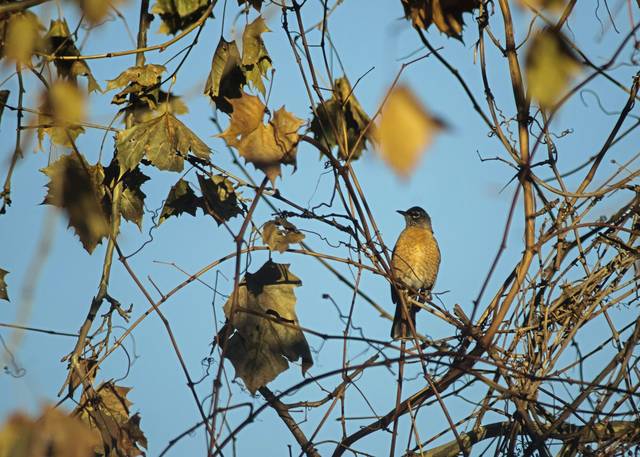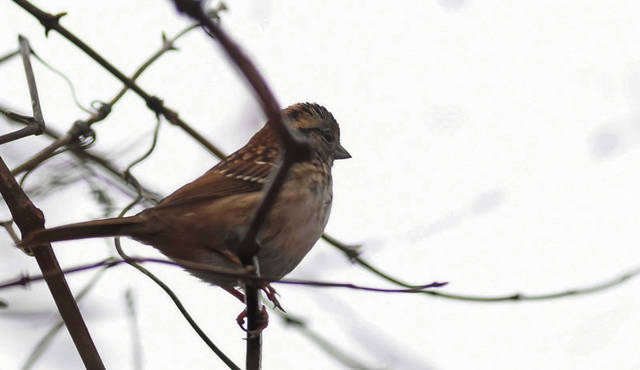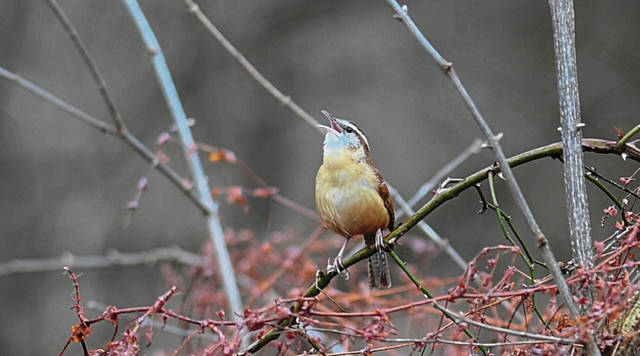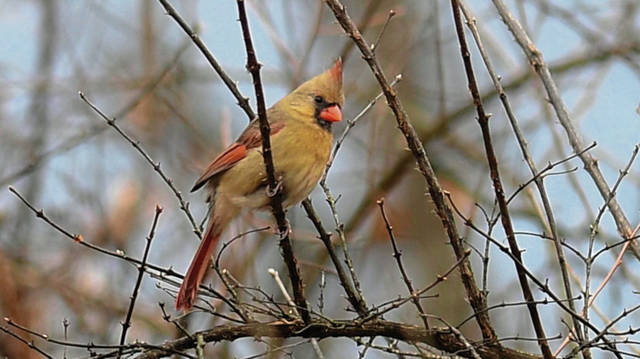Mild weather impacting flocks of robins in Pittsburgh region
If you’re noticing more American robins lately — flocks of them — so did residents counting birds in the Pittsburgh area for the 120th annual National Audubon Society Bird Count.
Volunteers tallied a little more than 28,000 birds among 72 species in the Pittsburgh area count circle during a Dec. 28 count. Almost 230 volunteers counted birds in a 15-mile area that included North Park, Hartwood Acres, Fox Chapel, Hampton, Indiana Township, Shaler, Schenley Park and more.
Nearly every one of the 13 count leaders surveying the Pittsburgh area commented on seeing large flocks of robins, said Brian Shema, who compiled the count.
Sherma is operations manager for the Audubon Society of Western Pennsylvania, which is based at Beechwood Farms in Fox Chapel.
Although the total of more than 2,600 robins isn’t breaking any records, the widely reported flocks of roaming robins were unusual among sightings of other bird species that typically head south for the winter.
When the Westmoreland Bird and Nature Club’s count took place Dec. 29, volunteers counted 255 robins, said executive member Dick Byers of Stahlstown. The most robins his group ever counted, more than 1,200, was in 1993.
According to Byers, it is not unusual to find robins during the Christmas count.
“These robins probably aren’t the ones that raised young here last summer,” he said. “These are likely Canadian robins. Migration is a very hazardous, energy-consuming trip. If weather conditions are mild and food is available, these birds will shore up and stay.”
During winter months, robins stay in the woods, meaning they are “not noticed much unless their numbers are really high,” Byers said.
Could it be the weather?
With two rainy years and two back-to-back mild winters, Shema said, “I think we begin to paint a picture that this bird count is representative of a mild winter and the birds being influenced by weather.” The excess rain could have produced a bounty of berries for robins and other birds to feed on this winter, he noted.
This past fall was somewhat mild, according to Lee Hendricks, meteorologist with the National Weather Service in Moon Township. However, some cold snaps dragged the average temperature down 5.2 degrees below normal for November. Last month, the Pittsburgh region was 3 degrees above normal.
Precipitation has been above normal, with 2019 coming in as the third wettest year and 2018 the wettest year on record since the 1850s, when records were first kept, according to Hendricks.
The American robin winters in the region. While some head south, flocks of robins from up north visit the area, Shema said. The main reason many people don’t see them in the winter is because robins change their feeding behavior, according to Shema, from eating insects and worms conspicuously on people’s lawns to foraging for berries in the woods and elsewhere.
December’s mild temperatures brought out another surprise: A wood frog hopping around Hampton, according to a report from Brady Porter, a Duquesne University associate professor of biology who leads the Hampton portion of the Pittsburgh bird count. Wood frogs typically hibernate in winter.
Other holdouts from summer — the Eastern towhee, brown thrasher, yellow-rumped warbler, red-winged blackbird and grackle — were all birds that should have migrated. Finding those birds on any bird count isn’t rare, but having all of them during one count is noteworthy.
Some birds no-shows
Also noticeable was the lack of birds that usually come here for the winter.
“The northern contingent of birds that are common here this time of year are relatively low,” Shema said. “I think that is an indication we are in an odd weather trend.”
The food supplies up north might be flush, giving the birds no urgency to migrate, he added.
The winter finches that dip down from Canada, such as the pine siskins and crossbills, did not make an appearance for the count. Other winter birds — such as the dark-eyed junco, red-breasted nuthatch and winter wren — were present in smaller numbers than usual.
In fact, counters in Ross and McCandless couldn’t find a single junco, according to Shema. Not that the bird wasn’t there, but counters Dec. 28 didn’t turn up one.
Other birds of interest included 10 fish crows and seven common ravens, which are more common in other parts of the state. Shema noted that those birds are showing up more consistently for the count and could be an example of the range of the fish crow and the common raven to “more confidently be drawn to include our area.”
The raw numbers from the count are plugged into mathematical formulas to determine population sizes and range of birds throughout the country.
Megan Tomasic contributed to this report.
Remove the ads from your TribLIVE reading experience but still support the journalists who create the content with TribLIVE Ad-Free.





